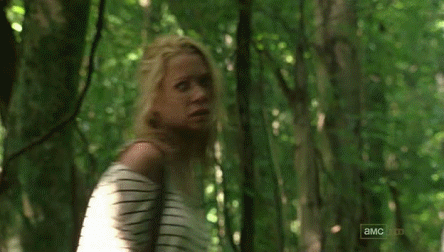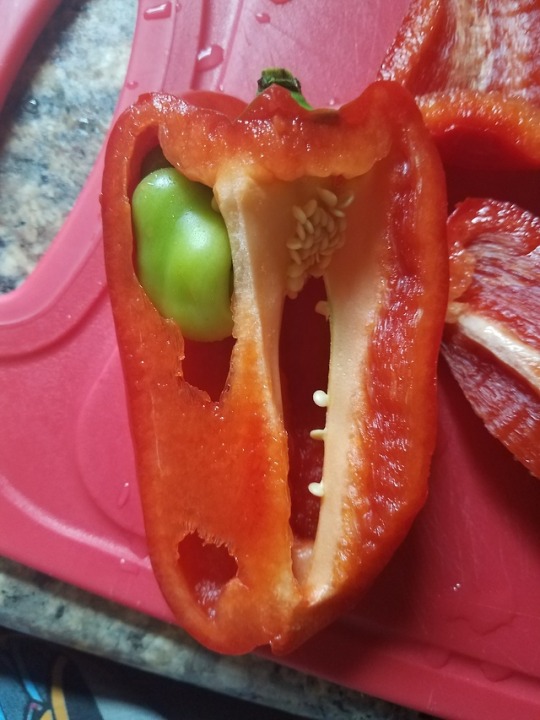Just a girl living her life going through BIO-252 and more.
Don't wanna be here? Send us removal request.
Text
Fire, Ticks, and No Significance: Oh My!
Okay so two weeks ago I went on a little adventure, but instead of going to Puerto Rico or China, I found myself out in the forests. This was my first time venturing out to the forests/prairies, specifically one known as the Conard Environmental Research Area (CERA). My classmates went there a few weeks before to watch some birds in the cold, but luckily sadly I wasn’t able to go because I got pretty sick a few days before. When we arrived at CERA I knew that we were going to go out and count some plants, but I definitely underestimated the experiment. When we first arrived, I found myself a bit overwhelmed as the details of the experiment were explained to us.
“Poison Ivy.
Ticks
Outside.”
Those were the words that got my blood pumping, but before I could really respond my classmates and I shuffled into another room to be trained in plant physiology. Then in less than 20 minutes from arriving, my fellow Grinnellians and I become very error prone botanists. As we walked into the forest to collect data, the further in we got, the more I realized I was not living my best life. Forests and me? Yeah, not a good pair. I just never had a need to walk into a place filled with a lot of dirt, insects, and potential danger.

But I’ll save all of that for another post. Anyways, when my group and I arrived at our assigned plot, we took 16 random samples of 1 meter squared areas and observed how many different plant species were there (Biology Department, 2018). Now let me tell you, trying to tell apart two different blades of grass along with a lot of other similar looking plants (looking at you Ranunculus abortivus and Viola adunca) can be so tiring. Once we finished I was so happy to return to a building that I didn’t even mind doing the data analysis. Each group (18 in total) then determined the richness, diversity, and richness per meter squared of their plots using their sample data.
Pause.
This is just a quick update on what each of those variables meant.
Richness:
The number of different plant species in a plot
Evenness: The abundance of those various plant species in a plot not considering species richness
Diversity: The abundance of all the different plant species in a plot that considers the species richness
Now before I continue, I just want to mention one quick thing. At first you may have thought
“Come on Steffie, why were you so dramatic about going outside?”
But after this you’ll understand. So as I was sitting in my seat, waiting to go back to school, I felt something tickle my neck a bit. Instinctively, I reached up and grabbed whatever was there, thinking it was just a piece of lint. But the next thing I know I see a little black thing with legs between my fingers and before I could even think I screamed and tossed the little bugger away. And what were the repercussions of my amazing survival skills? The whole class staring at me.

Yeah, I was not living my best life yet again.
Despite that one traumatic experience, I trudged onward and began focusing on the important things. The data. The purpose of my trek into the wilderness was to see if controlled burns would actually increase the species richness of the entire plot, richness per meter squared, plot diversity, and plot evenness of the burnt plots. We believed such a difference would occur because in oak forests, such a change was observed in the past and although this experiment focused upon the herbaceous and shrub plant community on the ground we thought a similar trend would be seen (Kruger and Reich, 1997).
But guess what...
No difference was found.

And this was after I ran four two sample t-tests comparing the unburnt plots to the burnt plots. Now let me tell you, there’s nothing sadder than seeing a p-value greater than 0.05 when you’re really hoping that there is a significant difference, especially after using Minitab. Although previous research has found that certain herbaceous plants did manage to grow better after a fire treatment, those plants were not observed in our plots (Hutchinson et. al, 2005). After this massive disappointment I took some time to breathe and began to consider potential reasons why we saw such a lack of effect with the fire and I have come up with three reasons:
The seeds of some plant species at CERA are basically immune to fire. I say this primarily because the plants at CERA may have hardier seeds that allowed them to withstand the annual fire treatments than predicted.

How I imagine some of the seeds may have reacted to the fire.
Iowa’s lovely and absolutely annoying strong winds may have carried some seeds from the unburnt plots over to the burnt plots. Thus reintroducing plants into the burnt plots to increase plot richness, diversity, etc.
The plant species there at CERA are naturally strong competitors. This increased competitive ability in the plants may have made it so that when new plants sprouted in both plots, evenness between the two plots became similar because none of the plants were able to outcompete the rest to create a skew of appearance in the proportions.

The Rock -- a human version of these CERA plants.
So now, you may be thinking
“Steffie, would you do this again?”
Quick answer --
No.
But it has nothing to do the lack of significance found, it honestly has everything to do with the idea of venturing out into the wilderness and potentially encountering a tick again.
#NotMyMood
However, I still would 110% support anyone who would continue on with this research. This is because although no significance may have been found in our data, this may not be the truth for all existing herbaceous and shrub plant communities. Instead I believe that we should persevere and continue on with our research. For future similar experiments at CERA, I suggest that a physical barrier be put up between the burnt and unburnt plots. This may be helpful because it would make it harder for wind to carry the seeds from the unburnt plots to the burnt ones. Maybe then we’d see a significant difference between the two plots.
Who knows?
But hey, if you’re interested in this, comment and I’ll help you plan an experiment in your own community!
Let’s burn some plants!

References Listed Below
Biology Department. (2018). Organisms, Evolution, and Ecology Activity Manual. Grinnell College.
Hutchinson, T., Boerner, R., Sutherland, S., Sutherland, E., Ortt, M., & Iverson, L. (2005). Prescribed fire effects on the herbaceous layer of mixed-oak forests. Canadian Journal Of Forest Research, 35(4), 877-890. doi: 10.1139/x04-189
Kruger, E., & Reich, P. (1997). Responses of hardwood regeneration to fire in mesic forest openings. I. Post-fire community dynamics. Canadian Journal Of Forest Research, 27(11), 1822-1831. doi: 10.1139/cjfr-27-11-1822
3 notes
·
View notes
Photo

Wall of Succulents, Allen Gardens Conservatory
- P
240 notes
·
View notes
Link

by Helena Horton
Researchers have managed to turn a spinach leaf into working heart tissue and are on the way to solving the problem of recreating the tiny, branching networks of blood vessels in human tissue.
Until now, scientists have unsuccessfully tried to use 3D printing to recreate these intricate networks.
Now, with this breakthrough, it seems turning plants with their delicate veins into human tissue could be the key to delivering via a vascular system into the new tissue.
Scientists have managed in the past to create small-scale artificial samples of human tissue, but they have struggled to create it on a large scale, which is what would be needed to treat injury.
Researchers have suggested that eventually this technique could be used to grow layers of healthy heart muscle to treat patients who have suffered a heart attack.
In order to create the artificial heart, the scientists stripped the plant cells from the spinach leaves, sending fluids and microbeads similar to human blood cells through the spinach vessels and then ‘seeded’ the human cells which are used to line blood vessels into it.
Okay yesterday I posted an article about a miracle procedure for growing human tissue using pigs which is going to save countless lives and allow us to grow organs with our own DNA. Magic. Tumblr was unimpressed. Now here is a technique to grow tissue and organs using PLANTS and literally transforming them into human tissue. Plants.
1K notes
·
View notes
Photo

forgot i took photos for back-up if i didnt have the time to take one a day! haha. I can’t wait for March to be over!!
301 notes
·
View notes
Link
325 notes
·
View notes
Photo


Obedient plant, obedience, or false dragonhead (Physostegia virginiana) is a species of flowering plant in the mint family, Lamiaceae. It is native to North America, where it is distributed from eastern Canada to northern Mexico.,It is considered a good plant for adding late-season flowers to a garden. Fertile soils produce robust growth and wide spreading, and the plant may require staking.
394 notes
·
View notes
Photo










The Raphael Of Flowers (Pierre-Joseph Redouté)
“ Pierre Joseph Redouté (1759-1840) was one of the most famous flower painters of all time, he was born into a Flemish painters’ family, who earned a living by producing decorative and church paintings. At an early age, he painted natural subjects. At the age of 16 he helped decorate the Karlsburg near Bouillon, eagerly studying the paintings of the Old Masters (with a particular focus on van Huysum). In 1782 he went to Paris, where he initially worked as a decorative painter at the “Theatre des Italiens”. In his spare time, he frequently drew in the Jardin du Roi. Here he caught the attention of the botanist Charles Louis L'Héritier, who encouraged him to produce anatomical studies, introduced him to dissection techniques and offered him free access to his botanical library and plant collection. Pierre Joseph Redouté contributed to L'Héritier’s “Stirpes Novae” and “Sertum Anglicum”, catching the eye of the flower painter Gérard von Spaendonck, who, together with other artists, produced drawings and paintings for the famous Vélins du Roi. Spaendonck recruited Pierre Joseph Redouté as a staff member, and he subsequently contributed over 500 paintings to this huge undertaking. An important aspect of this collaboration was that Redouté was introduced to Spaendonck’s watercolor technique, by which he used to produce flower paintings with a bright transparency. Finally, Marie-Antoinette appointed him as her court painter. Encounters with the royal family were, however, rare. A famous incidence was Redoute’s visit to the royal family in prison during the revolution. They had Pierre Joseph Redouté come to see them, because a rare cactus was in bloom and they wanted this beautiful moment captured in a picture. During the 1790s, Redouté became one of the most popular flower painters. He perfected the color stipple engraving technique, which he had learned during a stay in London and first applied it in his illustrations for de Candolle’s work “Plantes Grasses”. From 1802 he published his “Liliacées”, in which he largely applied the technical possibilities of color printing to the large and evenly colored leaves and blossoms. In this work he also breached the flower painters’ tradition of framing the plants with an outer contour line. In 1805 he was appointed court and flower painter to the Empress Josephine. After she had been overthrown, he remained in close contact with the Bourbon royal family. From 1817 to 1824 he produced the work that was to become the peak of his success, namely the monography “Les Roses” in an excellent print by Firmin Didot. Each delivery of the finished color copperplates, was received with a storm of enthusiasm, but in spite of his fame and his employment at court, he continued to attribute more importance to the scientific detail than to the effects of composition and color seen in purely artistic flower paintings. From 1822 until he died, Pierre Joseph Redouté occupied a simple position as a painting teacher, succeeding Spaendonck, and often talked about his art in front of over 150 students in the large hall of the Buffon gallery.”
1st Row
1. Bouquet of Roses with an Anenome
2. Rosa Gallica Aurelianensis
3. Rosa Centifolia Foliacea
2nd Row
1. Rosa Sulfurea
2. Lilium Pendoliflorum
3. Martagon Lilium
3rd Row
1. Rosa Multiflora Carnea
2. Aster Chinensis
3. Hydrangea Macrophylla
840 notes
·
View notes
Photo

Time for a little monocot vs dicot! Remember, as always with biology, there are some exceptions!
998 notes
·
View notes
Photo

branches of biology → botany
the science of plant life and a branch of biology. A botanist or plant scientist is a scientist who specialises in this field. The term “botany” comes from the Ancient Greek word βοτάνη (botanē) meaning “pasture”, “grass”, or “fodder”; βοτάνη is in turn derived from βόσκειν (boskein), “to feed” or “to graze”.
4K notes
·
View notes
Link
“Roads of the future could be lit by glowing trees instead of streetlamps, thanks to a breakthrough in creating bioluminescent plants. Experts injected specialized nanoparticles into the leaves of a watercress plant, which caused it to give off a dim light for nearly four hours. This could solve lots of problems.
The chemical involved, which produced enough light to read a book by, is the same as is used by fireflies to create their characteristic shine. To create their glowing plants, engineers from the Massachusetts Institute of Technology (MIT) turned to an enzyme called luciferase. Luciferase acts on a molecule called luciferin, causing it to emit light.”
Source: TheSpaceAcademy
8K notes
·
View notes
Photo

My mom bought a pepper and it had this second secret, smaller pepper inside it, pepper in peppu
33K notes
·
View notes










